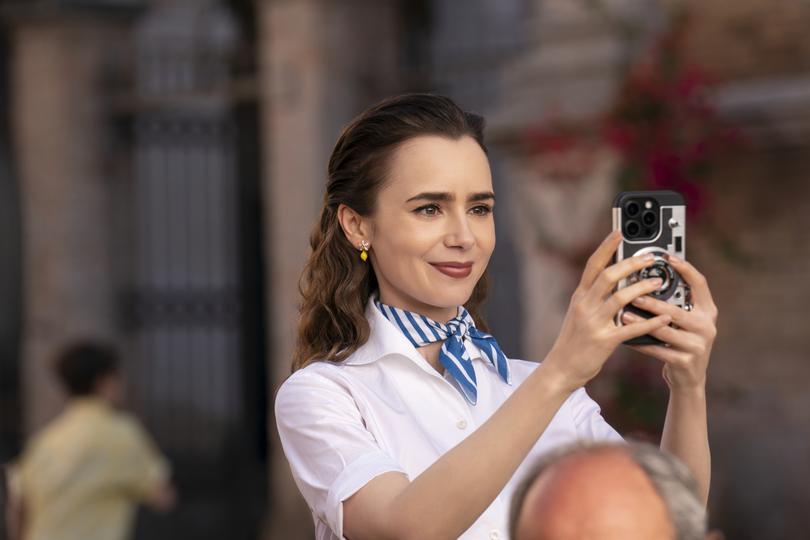Emily in Paris season four part two review: Roman holiday is exactly same, exhausting formula

Four years in, the fact that Emily in Paris is the television equivalent of gorging on an entire bag of lollies is not new.
Just like sugared sweets, it looks good, is wholly insubstantial, indulgent in the moment, and unsatisfying upon any reflection.
What’s interesting is that Emily in Paris is completely uninterested in growth even though it’s working in a serialised format that lends itself to more ambitious storytelling with arcs and textures. It knows it’s onto a winning (read: popular) formula and it’s sticking to it.
Sign up to The Nightly's newsletters.
Get the first look at the digital newspaper, curated daily stories and breaking headlines delivered to your inbox.
By continuing you agree to our Terms and Privacy Policy.Although maybe its power is waning? In the first four weeks of release of the five-episode first part of season four, it clocked 127 million hours viewed.
The third season was watched for over 285 million hours in the same time frame but that was a full season, so if you halve it for a fairer comparison, it’s 142.5 million hours. So, it’s down, slightly, but down.
Maybe some audiences are finally exhausting of its stagnating story and character beats?

Still, it remains one of the most fun shows to hate – yes, more than And Just Like That – and you’ll rarely hear anyone describing it as a “pleasure” without the word “guilty” in front of it.
Guilty pleasures are fine, and while some people will say that anything pleasurable should never make you feel guilty, that something is unacceptable is what ramps up the fun factor.
There’s something illicit about it. That it is in bad taste, maybe because it’s trashy or gauche or, in the case of Emily in Paris, so woefully written and sometimes poorly performed, is what makes it even more sickly delicious. We’re not meant to like it, so the act of doing so is one of defiance.
But we should also be real about it. Emily in Paris is one of the laziest TV shows being made. Imagine how great it could be if all those glitzy production values – the lush locations, the costumes – were being matched with scripts that didn’t make you feel embarrassed for it, if it had plotlines that made sense, or any sort of emotional honesty.
It’s hard to be invested in any character’s story when it seems like the filmmakers treat big moments with the same stakes as what hat Emily is going to wear in a scene.

It doesn’t matter if she ends up with Gabriel, Alfie or the newcomer, an Italian stallion whose name you don’t even need to remember. No matter the outcome, Emily will remain the same clueless, guileless American ingenue whose “I’m a go-getter” schtick only has one note.
The series transports the action to Rome for the final episodes of this instalment but except for the transition in location (and, to be fair, the Eternal City looks spectacular), the show is exactly the same. If you hoped a new city would inject fresh blood into it, you’d be wrong.
Emily in Rome is exactly the same as Emily in Paris. Characters will actually declare that all of Rome has fallen in love with Emily despite never mounting an argument as to why.
Maybe that’s the real appeal of the series. It’s that it doesn’t change, ever. Well, maybe it gets worse. Or maybe we just feel worse about still being trapped in Emily’s world.
Rating: 2/5
Emily in Paris is streaming now on Netflix

